ALLIESTHESIA – Changed sensation
Alliesthesia as Michel Cabanac described it in Physiological Role of Pleasure (1971):
“Is a psychological and physiological phenomenon that describes the dependent relationship between the internal state of an organism and the perceived pleasure or displeasure of stimuli.”
Is important to understand that and organism’s internal state is in constant change. These changes could be perceived as pleasant or as unpleasant. The sensation that we feel then, depends not only on the quality or on the intensity of the stimulus, but also on the internal state of our organism. This is what we understand as perception. The perception that we get from a stimulus, this change from pleasant to unpleasant sensation (or the other way around); is what we call allesthesia.
Alliesthesia can be categorized in several ways. First we could see alliesthesia as:
- Negative alliesthesia, which is the change on internal state from pleasure to displeasure sensation.
- Positive allieshtesia, which is the one that we all like, the shift of sensation from displeasure to pleasure.
The types of alliesthesia, could also be differentiated by the sense that is receiving the stimuli:
- Thermal
- Olfactory
- Gustatory
- Visual
- Auditory
And these are mainly divided into chemical and physical sensations.
ALLIESTHESIA IN ARCHITECTURE
During the Roman Empire, they built thermal baths, which had different spaces and pools with different water temperature. People could go from warm, to hot and to cold water, experiencing the different sensations of going from one to another. The feeling of this contrasts and not starting in a neutral state is what produces the pleasure. However, if we would submerge into cold water without any context, we would just feel displeasure.
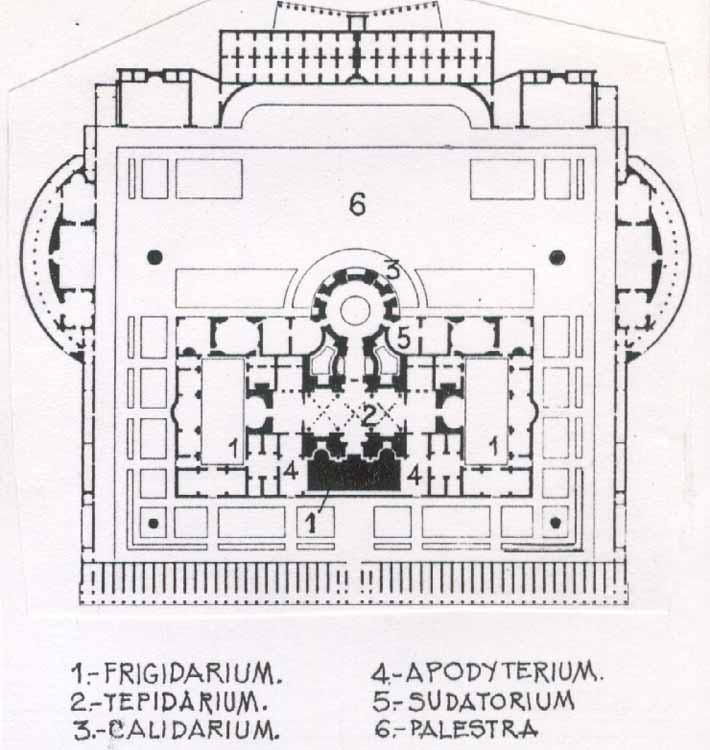
Source: historicodigital.com
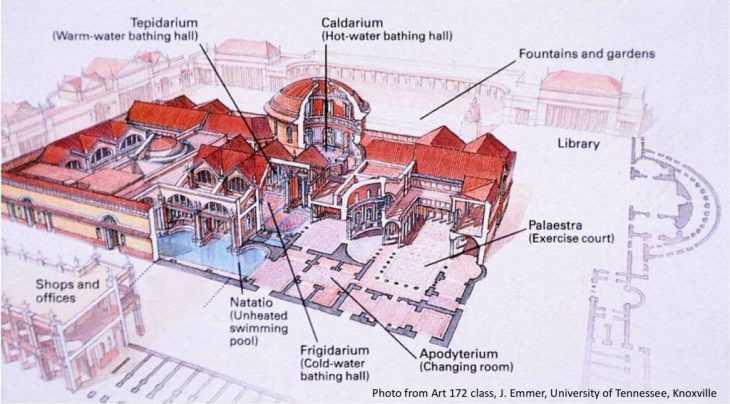
Source: pinterest.com
As a more recent example of this contrasts that we are talking about we could take the thermal baths in Vals. Here, Peter Zumthor distributed some localized and very defined spaces with a specific water or room temperature. He designed a space where light and material amplify the different sensations and contrasts that the user is feeling through the spaces.
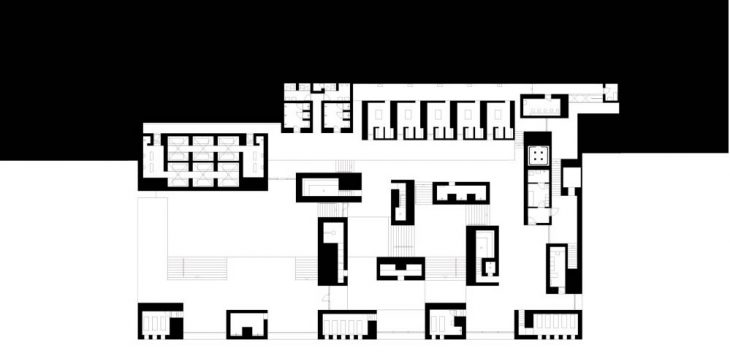
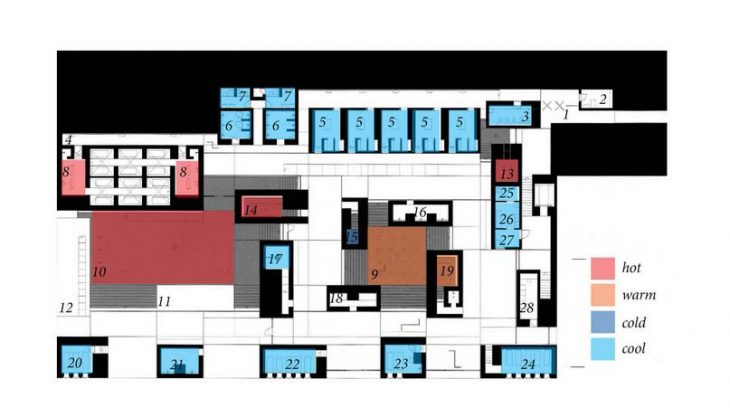
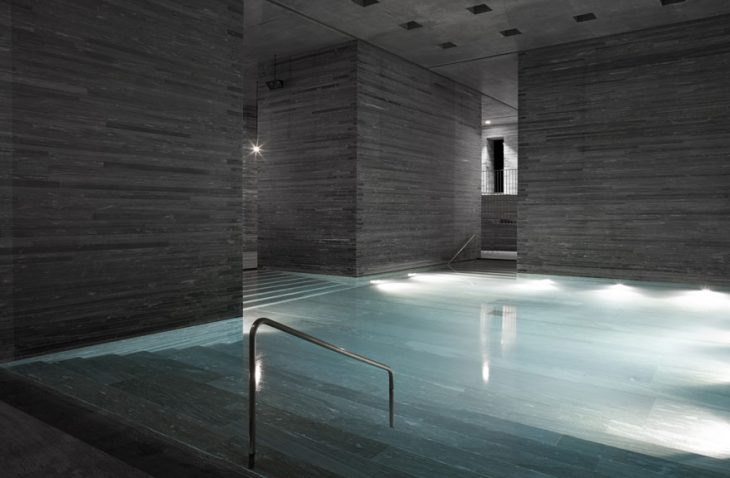
Source: plataformaarquitectura.com
Another good example is Hammam spa, from Ressano Garcia. The temperature of the room is directly translated into the shape of the space. In the hot room there are curves, and everything flows as if was melting, while in the cold room there is a predominance of straight lines and cut edges, as if everything was solid. Each space, is amplifying the temperature sensations in its own way, intensifying the stimuli that the user would receive.
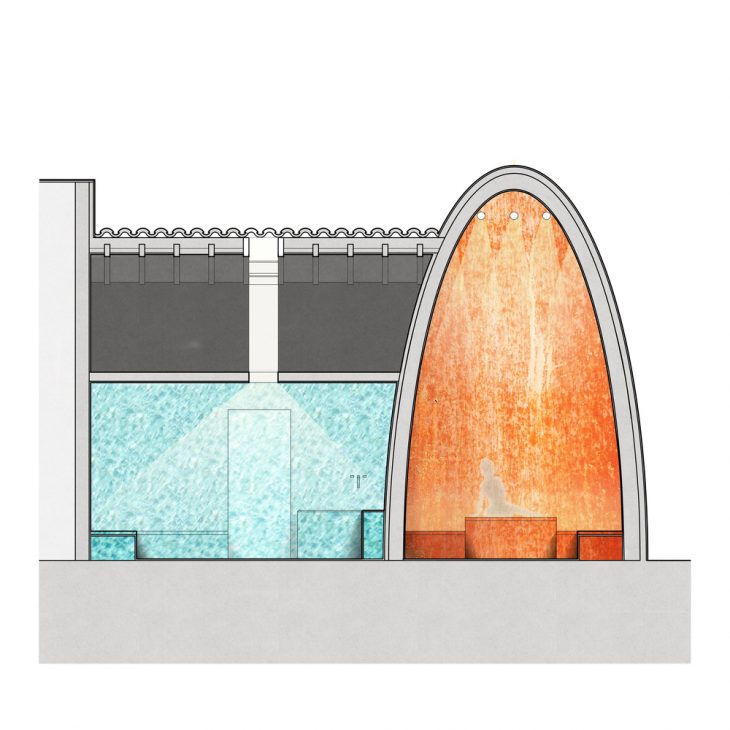
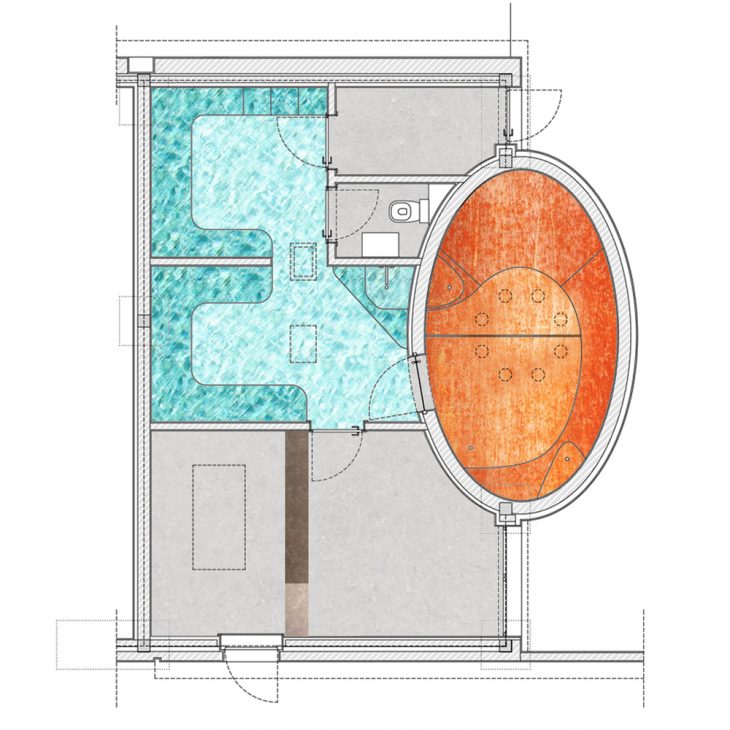
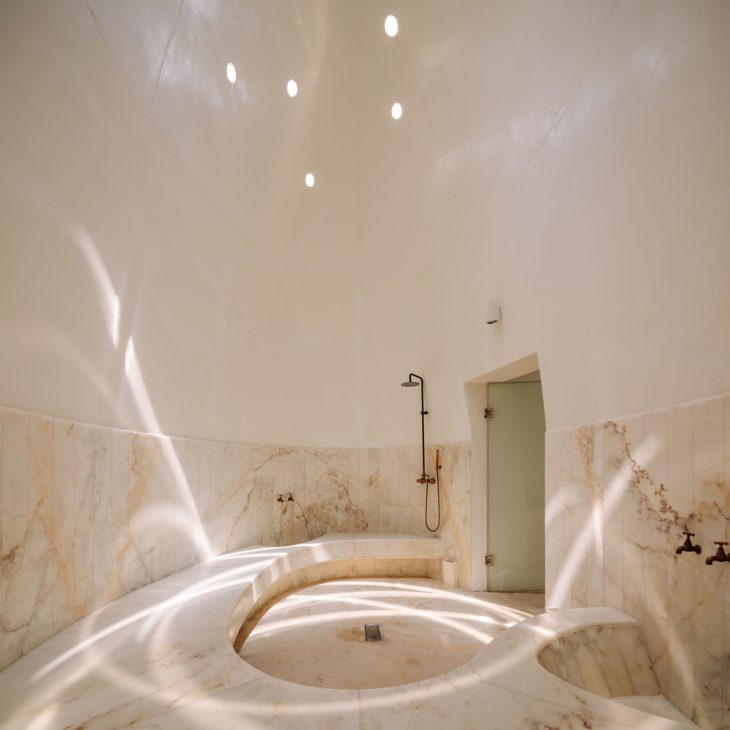
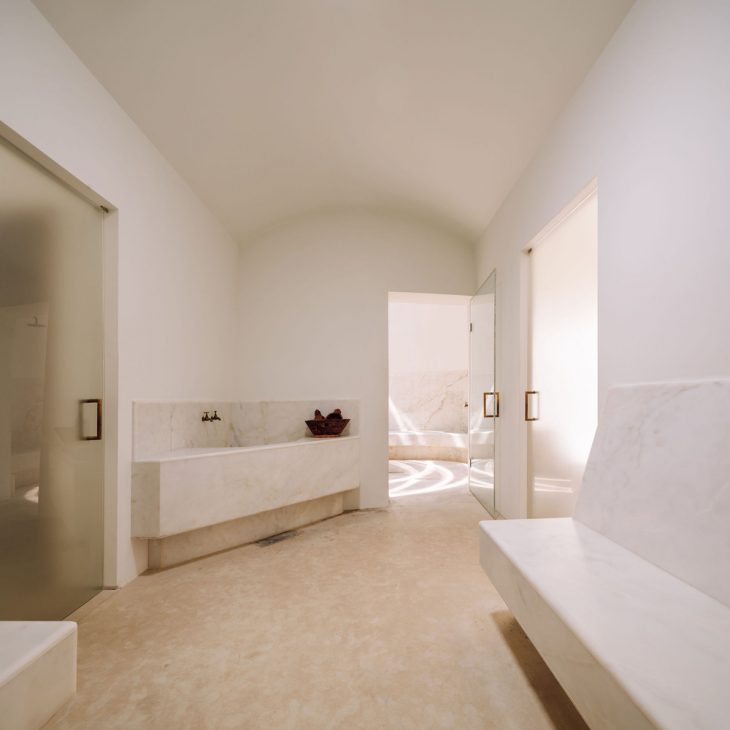
Source: plataformaarquitectura.com
ADAPTIVE COMFORT MODEL
The previous examples were based on one very important thing: Humans can adapt on different temperatures. This is because of homeostatic thermoregulation, which is the ability of the body to seek and maintain a condition of balance within its internal environment.
As Richard de Dear describes in ‘Revisiting an old hypothesis of human thermal perception: alliesthesia’, with the study that Arens et al. (2006) did, only 80% of building’s occupants feel neutral or acceptable. Taking this into account we could say that uniform and constant thermal conditions throughout the day might not satisfy our needs. We could say instead, that due to homeostasis, temperature variations that take us from a slightly uncomfortable thermal state to a comfortable one are perceived as pleasant. In other words, cold stimuli will be perceived as pleasant by someone who is warm, whilst warm stimuli will be experienced as pleasant by someone who is cold. Which is related to what Lisa Heschong stated on Thermal delight in architecture (1976):
“To enjoy being warmed or cooled we need some awareness of the process. Clearly, it is impossible to enjoy consciously what we don’t notice”.
These ideas of adaptive comfort were already used in vernacular architecture. It can be achieved through natural ventilation, as it happens in traditional windcatchers, which are really good passive cooling systems. They take air from the outside, a cold stimulus, onto someone who is warm in the interior, experiencing as a consequence positive alliesthesia.

Alliesthesia in Architecture is a project of IaaC, Institute for Advanced Architecture of Catalonia
developed at Master in Advanced Computation for Architecture & Design in (2020/2021) by:
Student: Jaime Cordero Cerrillo
Faculties: Jane Burry
